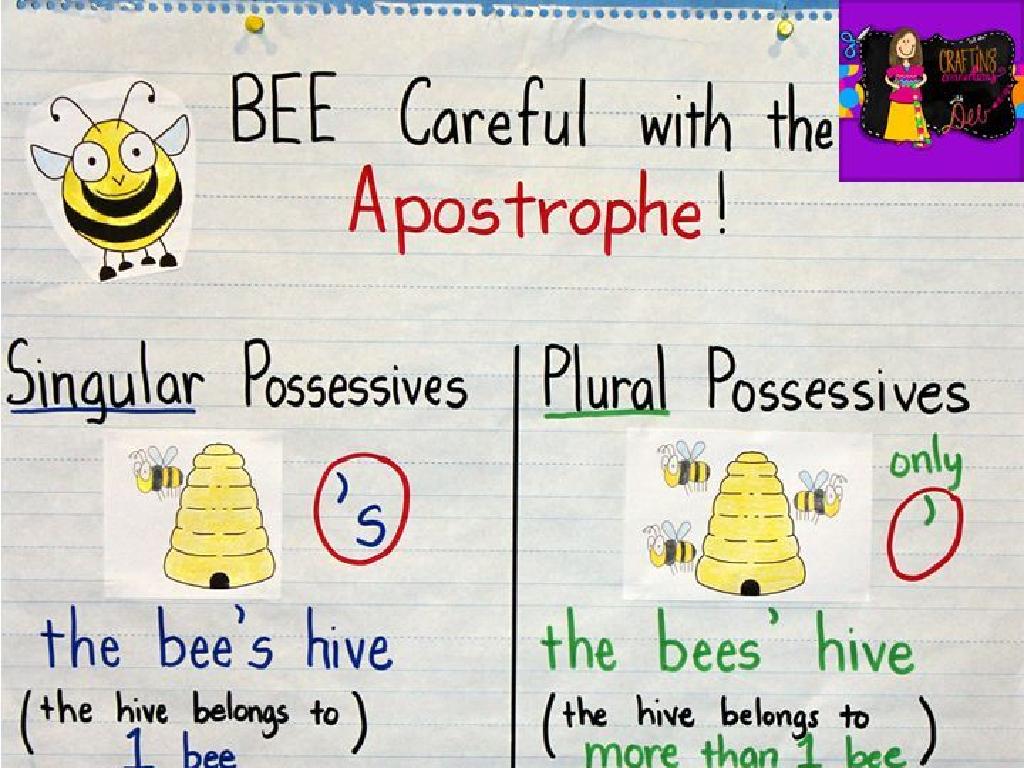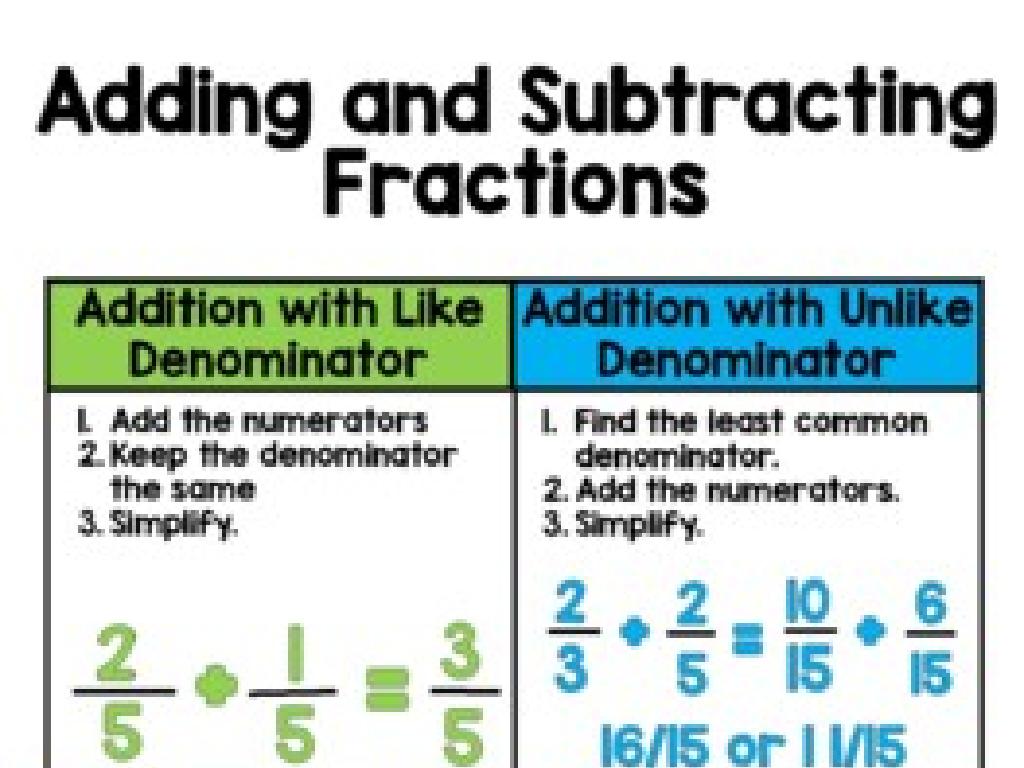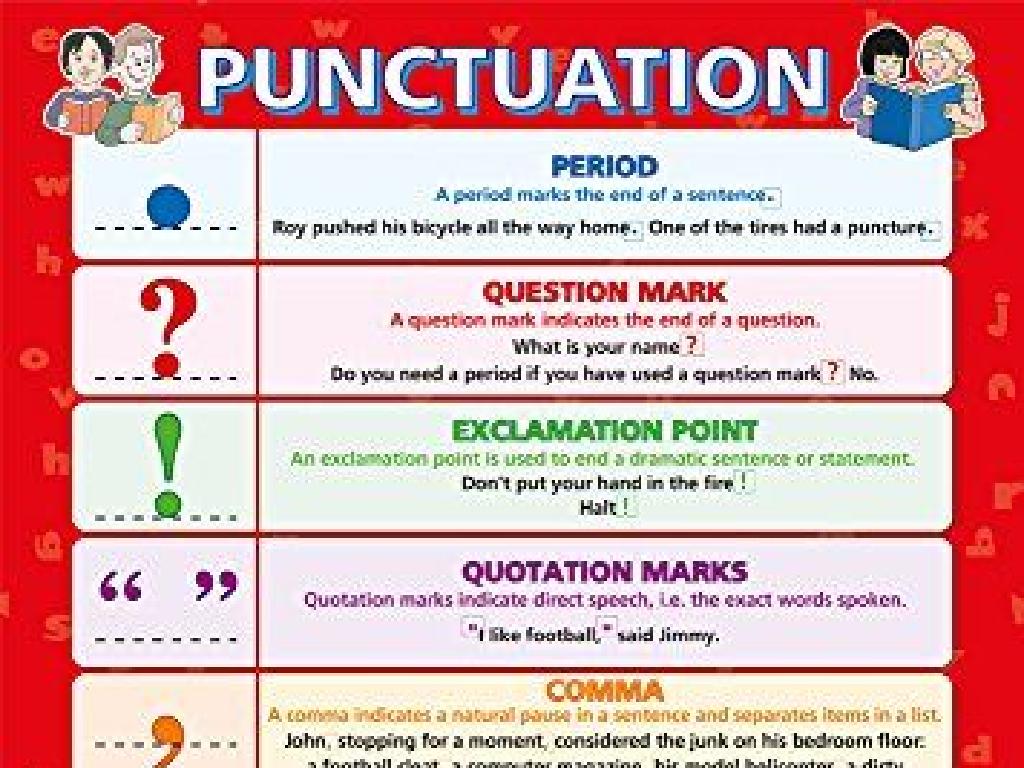The Revolutionary War: Preparing For War
Subject: Social studies
Grade: Seventh grade
Topic: The American Revolution
Please LOG IN to download the presentation. Access is available to registered users only.
View More Content
Introduction to the American Revolution: Preparing for War
– Grasp the American Revolution
– A struggle for independence from British rule.
– Significance of the Revolutionary War
– Marked the birth of the United States.
– Preparing for War: An Overview
– Strategies and challenges faced by the colonists.
– Engage with today’s lesson
|
This slide introduces the American Revolution, setting the stage for understanding the conflict that led to the foundation of the United States. Highlight the Revolutionary War’s role as a pivotal event in American history, emphasizing its significance in achieving independence from British rule. Provide an overview of the key strategies and challenges faced by the colonists as they prepared for war. Engage students by connecting the lesson to their prior knowledge and encouraging them to think about what it means to prepare for a significant conflict. Use this opportunity to create excitement and curiosity about the detailed events and decisions that led to the war.
Causes of the American Revolution
– Recap of events preluding war
– Review key conflicts and policies imposed by Britain
– Taxation without representation
– ‘No taxation without representation’ was a colonial rallying cry
– Boston Tea Party significance
– The Boston Tea Party was a protest against the Tea Act, symbolizing defiance
– Impact on colonial mindset
– These events fueled the desire for independence and set the stage for war
|
This slide aims to provide students with a concise understanding of the pivotal events that led to the Revolutionary War. Begin with a brief recap of the events, highlighting the growing tensions between the colonies and British rule. Explain the concept of ‘taxation without representation’ and why it was unjust in the eyes of the colonists. Discuss the Boston Tea Party as a significant act of protest that escalated the conflict. Emphasize how these events contributed to the colonial desire for independence and prepared them for the upcoming war. Encourage students to consider how these causes are interconnected and to think critically about the colonists’ perspectives during this time.
The Continental Congress: Road to Revolution
– Formation of the Continental Congress
– First met in 1774 to address colonial grievances
– Key figures and their roles
– John Adams, Samuel Adams, George Washington, etc.
– Decisions towards war preparation
– Agreements on boycotts, forming militias, and unity
– Impact on Revolutionary War
|
The slide introduces the Continental Congress as a crucial step towards American independence. It was established as a response to the growing tensions between the thirteen colonies and the British Crown. Key figures like the Adams cousins and George Washington played significant roles in uniting the colonies and leading them towards a common goal. The Congress’s decisions, including trade boycotts and the establishment of militias, were pivotal in the colonies’ preparation for the impending conflict. This slide sets the stage for understanding the political and military strategies that were instrumental in the American Revolution.
Militias vs. Continental Army
– Militias vs. Continental Army
– Militias were local groups of armed citizens, while the Continental Army was the official army.
– Militias’ role in early battles
– Militias were crucial in early battles like Lexington and Concord, providing immediate defense.
– Washington leads Continental Army
– George Washington was appointed as the commander-in-chief, bringing structure to the army.
– Significance of organized military
|
This slide aims to distinguish between the spontaneously formed militias and the more structured Continental Army during the Revolutionary War. Emphasize the role of militias as the first line of defense in early skirmishes, highlighting their local and voluntary nature. Contrast this with the formation of the Continental Army, which was a unified force led by George Washington. His leadership was pivotal in transforming a group of disparate militias into a disciplined army capable of taking on the British forces. Discuss the importance of having an organized military strategy and how it contributed to the eventual success of the American Revolution. Encourage students to consider the challenges and advantages of both militias and a standing army in the context of the war.
Strategies and Challenges of the Revolutionary War
– British vs. American strategies
– British sought control of cities; Americans used guerrilla tactics
– Continental Army’s challenges
– The Army faced shortages and harsh winters
– Significance of foreign alliances
– Alliances provided crucial support and resources
|
This slide aims to outline the key military strategies and challenges during the Revolutionary War. The British military aimed to use their superior numbers and naval power to control major cities and suppress the rebellion, while the American forces, led by George Washington, often relied on guerrilla warfare and avoiding large-scale confrontations. The Continental Army faced numerous challenges, including shortages of food, ammunition, and clothing, as well as difficult winters at encampments like Valley Forge. The importance of foreign alliances, particularly with France, cannot be overstated as they provided essential support in the form of troops, naval assistance, and supplies which were critical to the American victory. Encourage students to consider how these strategies and challenges shaped the course of the war and the eventual outcome.
Life During the Revolutionary War
– Daily life of soldiers
– Soldiers faced hardships like scarce supplies and harsh conditions.
– Women’s roles in the war
– Women managed farms, businesses, and also served as nurses.
– Children’s contributions
– Children helped by running errands and some even joined the fight.
– Impact on civilian life
– Civilians dealt with shortages and often supported the war effort.
|
This slide aims to give students a glimpse into the personal experiences of those who lived through the Revolutionary War. Discuss the daily struggles of soldiers, such as lack of food, clothing, and shelter, and the constant threat of battle. Highlight the critical roles women played, not only in supporting their families but also in contributing directly to the war effort. Explain how children, though young, also played their part, whether through small tasks or more direct involvement. Emphasize the resilience of civilians who, despite the turmoil, found ways to contribute to the cause for independence. Encourage students to consider how everyone, regardless of age or gender, had a role in shaping the war’s outcome.
Class Activity: Revolutionary War Simulation
– Divide class into British & American forces
– Create your group’s battle strategy
– Think about terrain, numbers, and resources
– Present your strategy to the class
– Discuss the strengths and weaknesses
– Consider historical outcomes and tactics
|
This activity is designed to engage students in the strategic aspects of the Revolutionary War by simulating a battle scenario. By dividing the class into British and American forces, students will gain perspective on the challenges faced by each side. Encourage each group to consider their manpower, resources, and the terrain of their chosen battle site when creating their strategy. After presentations, lead a discussion on the strengths and weaknesses of each plan, relating them to actual historical strategies and outcomes. Possible variations of the activity could include using a map for planning, writing journal entries from a soldier’s perspective, or creating propaganda to support their side’s cause.





